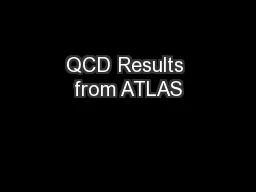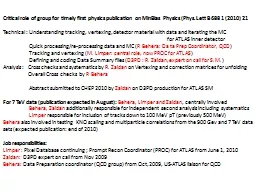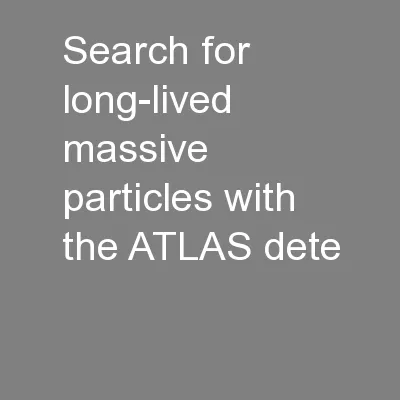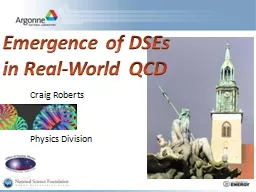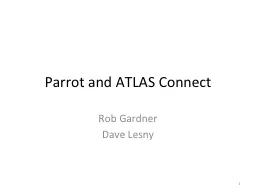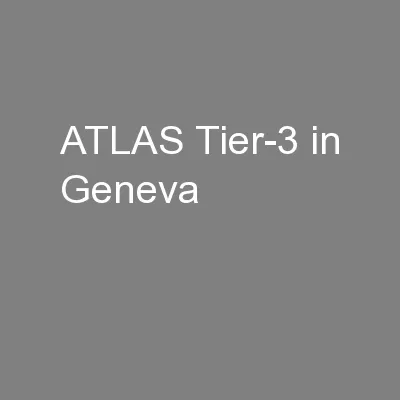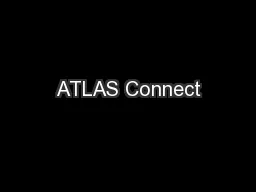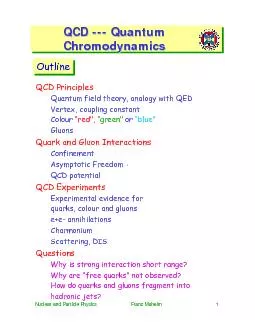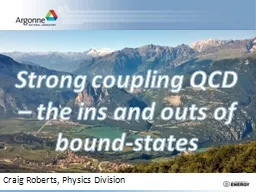PPT-QCD Results from ATLAS
Author : kittie-lecroy | Published Date : 2016-12-22
Jon Butterworth UCL for the ATLAS collaboration First look with a new detector First look in a new kinematic regime Soft ish physics and tuning Hard physics and
Presentation Embed Code
Download Presentation
Download Presentation The PPT/PDF document "QCD Results from ATLAS" is the property of its rightful owner. Permission is granted to download and print the materials on this website for personal, non-commercial use only, and to display it on your personal computer provided you do not modify the materials and that you retain all copyright notices contained in the materials. By downloading content from our website, you accept the terms of this agreement.
QCD Results from ATLAS: Transcript
Download Rules Of Document
"QCD Results from ATLAS"The content belongs to its owner. You may download and print it for personal use, without modification, and keep all copyright notices. By downloading, you agree to these terms.
Related Documents

